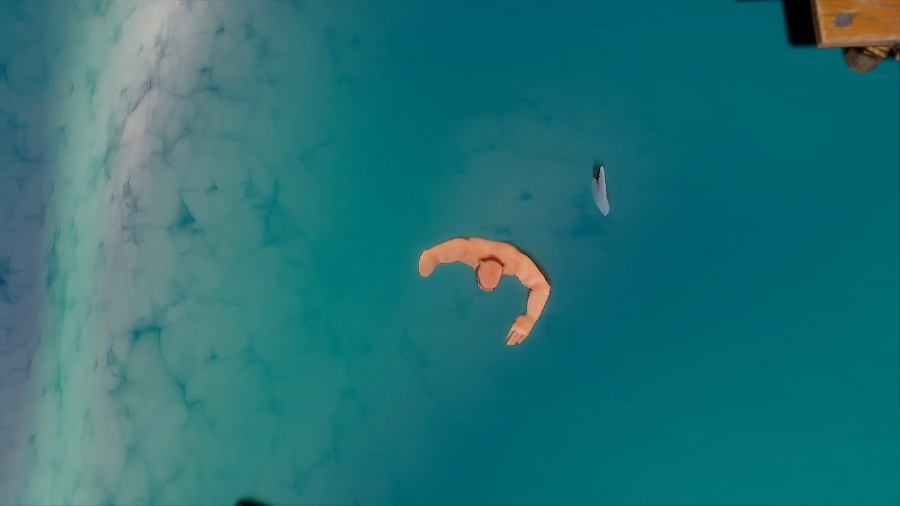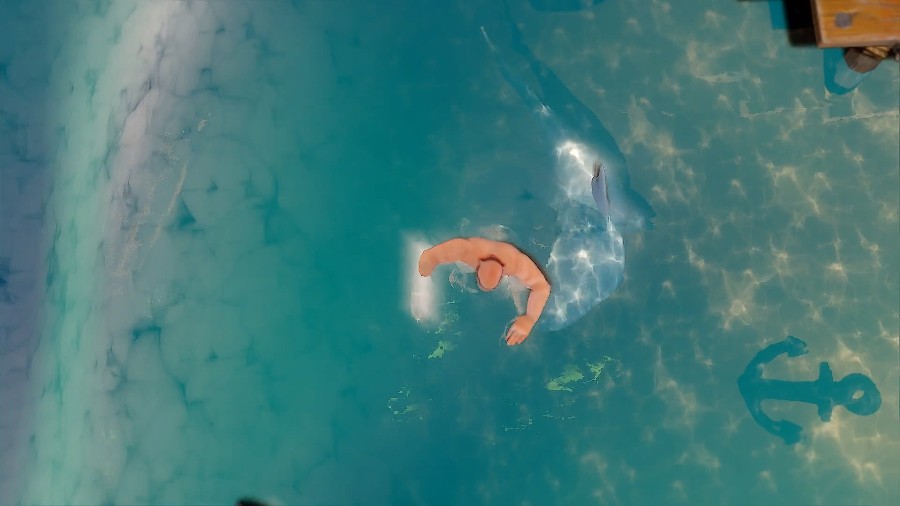RAY TRACING
REIMAGINED
Our ray tracing brings true-to-life lighting, reflections and shadows to mobile, automotive, cloud and XR, without draining power or budget.



WHAT IS RAY TRACING?
Ray tracing is different.
Inspired by how light works in nature, ray tracing simulates the path of photons as they bounce around a scene—from the light source to the viewer’s eye. As light interacts with surfaces, it’s blocked, reflected, or refracted, even by off-screen objects. This creates realistic shadows, reflections and lighting effects.
The result? More life-like images and a simpler, more intuitive lighting process for developers and content creators.

RAY TRACING FOR THE MASSES
Available in single, dual, triple, and quad-RAC setups, DXT can be tailored to match the needs of a wide range of devices.
Compared to the previous generation, DXT delivers usable ray tracing with up to 40% less silicon area, helping reduce cost without compromising quality.
OUR UNIQUE APPROACH TO REAL-TIME RAY TRACING
Ray tracing is computationally intensive, which makes real-time performance a challenge, especially on mobile and edge devices. To overcome this, our architecture features patented, specialist hardware blocks that accelerate full ray tracing or enable an efficient hybrid rendering approach. This combines traditional rasterisation with ray tracing to deliver realistic lighting, reflections and shadow… at speed.
Our IMG DXT GPU IP introduced a flexible and scalable design tailored to meet the power and silicon area constraints of a broad range of markets. With configurations to suit everything from high-end platforms to more constrained designs, it brings real-time ray tracing within reach for more devices.
Thanks to its efficiency-focused features, IMG DXT maximises visual quality even at lower ray budgets, helping you achieve the ideal balance of performance and image fidelity.


A VISUAL REVOLUTION THAT SPANS KEY MARKETS
MOBILE
As ray tracing becomes standard on PCs and consoles, users will expect the same visual quality on their mobile devices. Imagination’s PowerVR GPU IP is already known for delivering console-quality graphics on portable hardware, and now, our mobile-first ray tracing extends that legacy into the next generation.
Designed with efficiency at its core, our ray tracing solution is ideal for battery-constrained mobile and XR devices. It enhances everything from mobile gaming to augmented and virtual reality apps, adding immersive realism through lifelike lighting and reflections.
AUTOMOTIVE
Displays are becoming central to the in-car experience, and premium brands are competing on visual quality. Ray tracing can elevate automotive graphics across infotainment, HUDs and safety-critical systems.
Technologies like surround-view, which rely on complex distortion correction, benefit greatly from ray tracing’s ability to render curved or warped projections in a single pass. This not only improves visual fidelity but also reduces latency, enhancing both safety and user experience.
CLOUD GAMING
Cloud gaming is reshaping how content is delivered, but managing heat and power at scale is a critical challenge for data centres. Imagination’s scalable ray tracing IP enables cloud platforms to deliver high-quality, ray-traced visuals while maintaining energy efficiency.
Our low-power architecture meets the performance demands of high-volume, high-fidelity cloud gaming environments, bringing cinematic realism to every stream, without overheating the infrastructure.
VISUALISATION
Industries such as architecture, property development, product design and interior design rely on highly accurate, photorealistic models. Traditionally, these take hours to render.
Imagination Ray Tracing makes real-time, physically based rendering possible, cutting time to market, improving collaboration, and delivering polished visual prototypes in moments rather than hours.
OUR PowerVR PHOTON ARCHITECTURE
Our PowerVR Photon architecture is the industry’s first Level 4 ray tracing solution, enabled by our custom-designed Ray Acceleration Cluster (RAC) hardware block. This scalable GPU component significantly boosts both performance and efficiency, delivering desktop-quality ray tracing to mobile devices and developers working on next-generation gaming and real-time applications.
LEVEL UP YOUR RAY TRACING
Understanding this is essential for power-sensitive markets like mobile, automotive, and edge AI, where real-time performance must be balanced with power and area constraints.
Want to know how Imagination’s GPU IP stands out? With unique innovations like our Coherency Engine and scalable Ray Acceleration Clusters, we’re delivering Level 4 ray tracing—optimiSed for next-gen, real-world applications.
RAY TRACING IN THE PALM OF YOUR HAND
IMG DXT GPU IP
IMG DXT offers everything a customer might need in a GPU for them to integrate it into their next-generation game-ready mobile devices. Delivering even greater performance levels and power efficiency while bringing affordable and usable ray tracing into the mainstream.
IMG CXT GPU IP
A sweet spot core for premium mobile devices. CXT enables advanced effects like ray traced soft shadows, reflections and global illumination to create beautifully realistic game worlds. This was previously reserved for the highest level desktop GPUs.
PowerVR PHOTON
The most advanced ray tracing architecture in the world, enabling desktop-level ray tracing for mobile.
FREQUENTLY ASKED QUESTIONS
Ray tracing is a graphics rendering technique that simulates how light behaves in the real world. Rather than approximating lighting as with rasterisation, ray tracing calculates the path of individual rays of light as they interact with virtual objects.
These rays can reflect, refract, or be absorbed by surfaces, resulting in more realistic shadows, reflections, and lighting effects.
Imagination’s ray tracing GPU IP uses dedicated hardware blocks to accelerate this process, delivering high-quality visuals while maintaining power efficiency, making ray tracing possible even on mobile and embedded devices.
In video games, ray tracing enhances realism by improving how light, shadows, and reflections appear on screen. This can make environments look more lifelike, especially with reflective surfaces, dynamic lighting, or transparent materials like glass or water.
Traditionally limited to high-end PCs, Imagination’s mobile-first ray tracing solutions bring these premium effects to smartphones, tablets, and even automotive displays, enabling console-quality graphics on a wider range of devices.
Rasterisation is a traditional graphics technique that converts 3D objects into 2D images by shading pixels based on their position and depth. It’s fast and efficient but relies on approximations for lighting and shadows.
Ray tracing simulates actual light rays, resulting in more realistic visuals with accurate reflections, refractions, and soft shadows. The trade-off is that ray tracing requires more computational power.
Imagination’s hybrid rendering approach combines both rasterisation and ray tracing, delivering the perfect balance of image quality and efficiency, ideal for everything from mobile devices to cloud gaming platforms.
Hardware-accelerated ray tracing uses specialised GPU IP blocks to speed up the complex calculations involved in simulating realistic lighting. This results in smoother, more detailed visuals without compromising power efficiency. Imagination’s ray tracing technology enables devices from smartphones to automotive systems to deliver stunning graphics while keeping energy use low.
Yes! Thanks to Imagination’s mobile-first ray tracing architecture, it’s now possible to bring ray-traced graphics to power-constrained devices such as smartphones and tablets.
This technology balances visual fidelity with battery life, enabling immersive gaming and augmented reality experiences on the go.
Hybrid rendering combines traditional rasterisation with ray tracing to achieve the best of both worlds: fast performance and realistic lighting. Imagination’s GPUs use this approach to deliver high-quality visuals without the full computational cost of pure ray tracing, making it practical for a wide range of devices and markets.
The Ray Acceleration Cluster (RAC) is a patented hardware block in Imagination’s PowerVR Photon architecture that boosts ray tracing performance and efficiency. By accelerating the most computationally intensive parts of ray tracing, the RAC enables real-time ray tracing effects with lower power consumption, perfect for mobile, automotive, and embedded applications.
